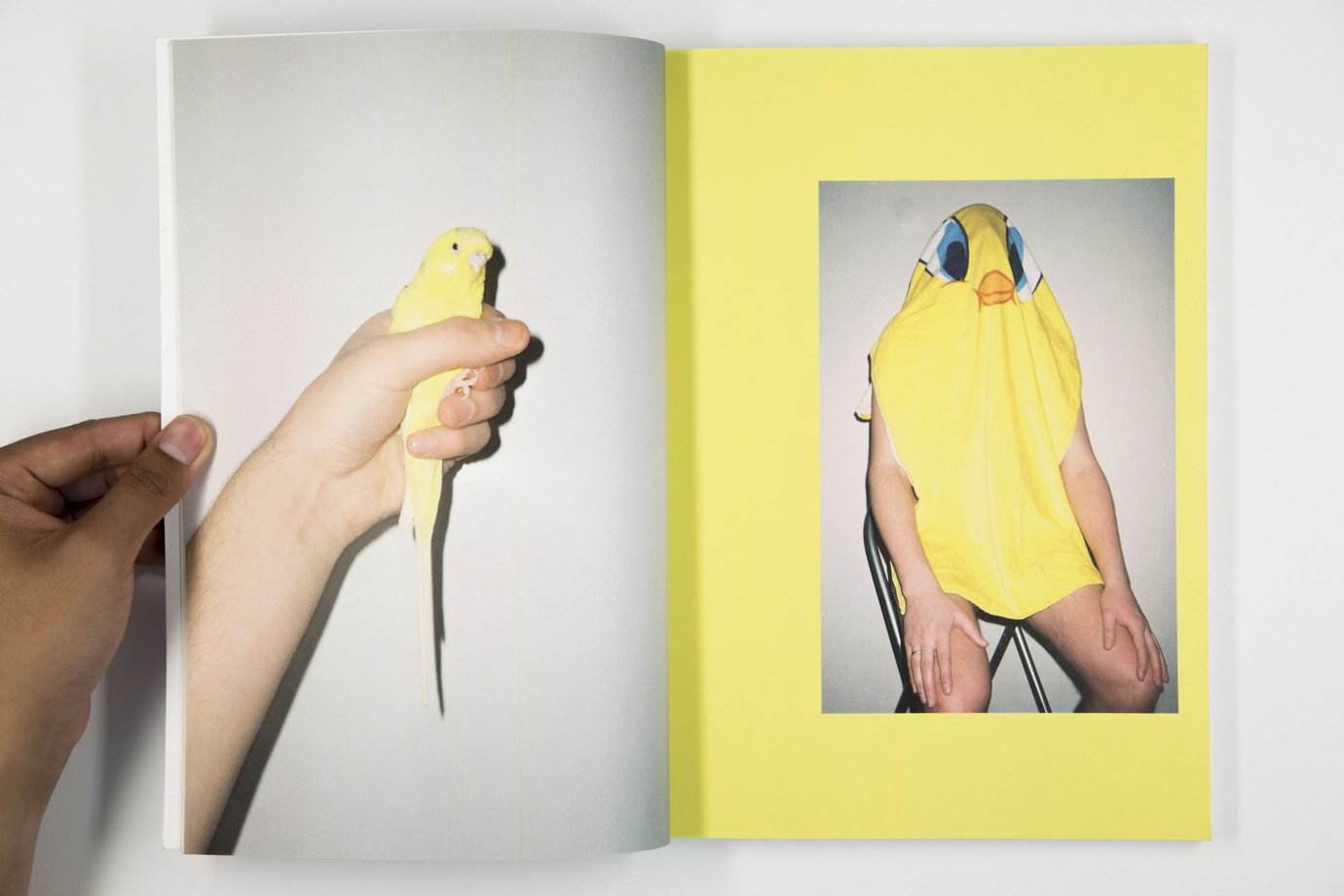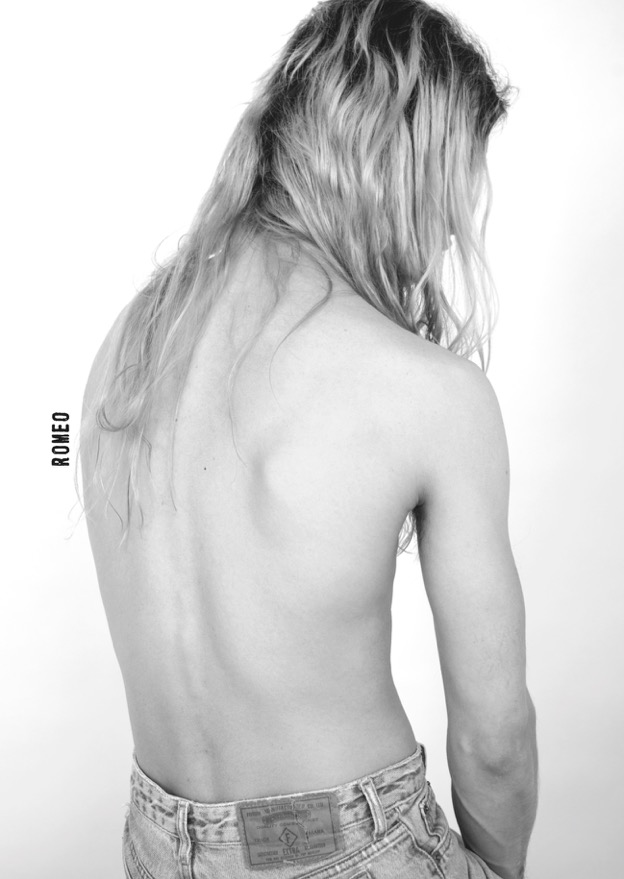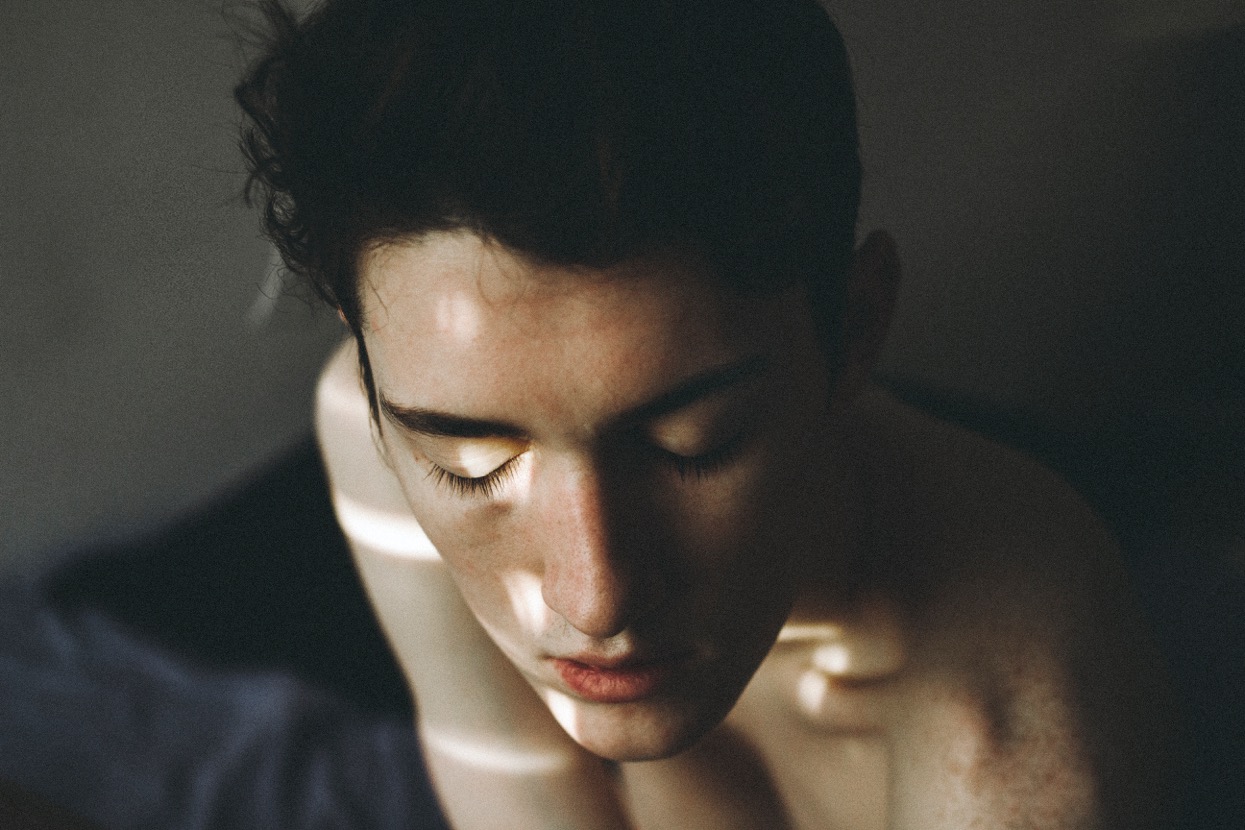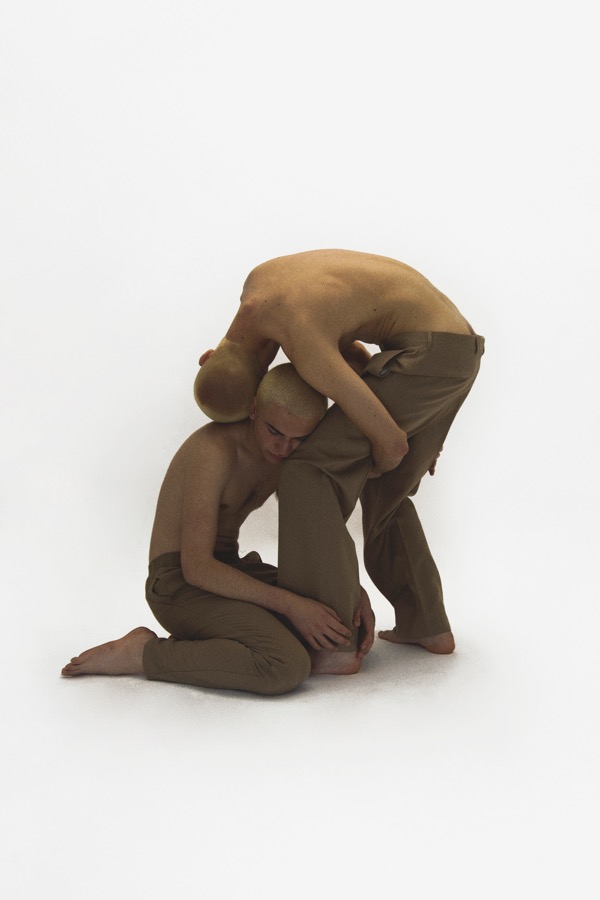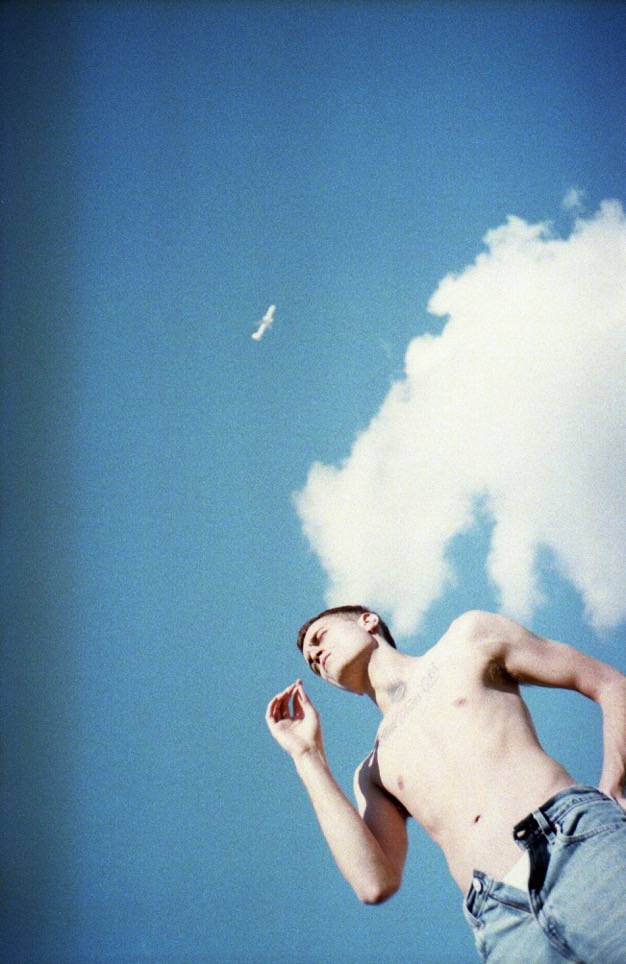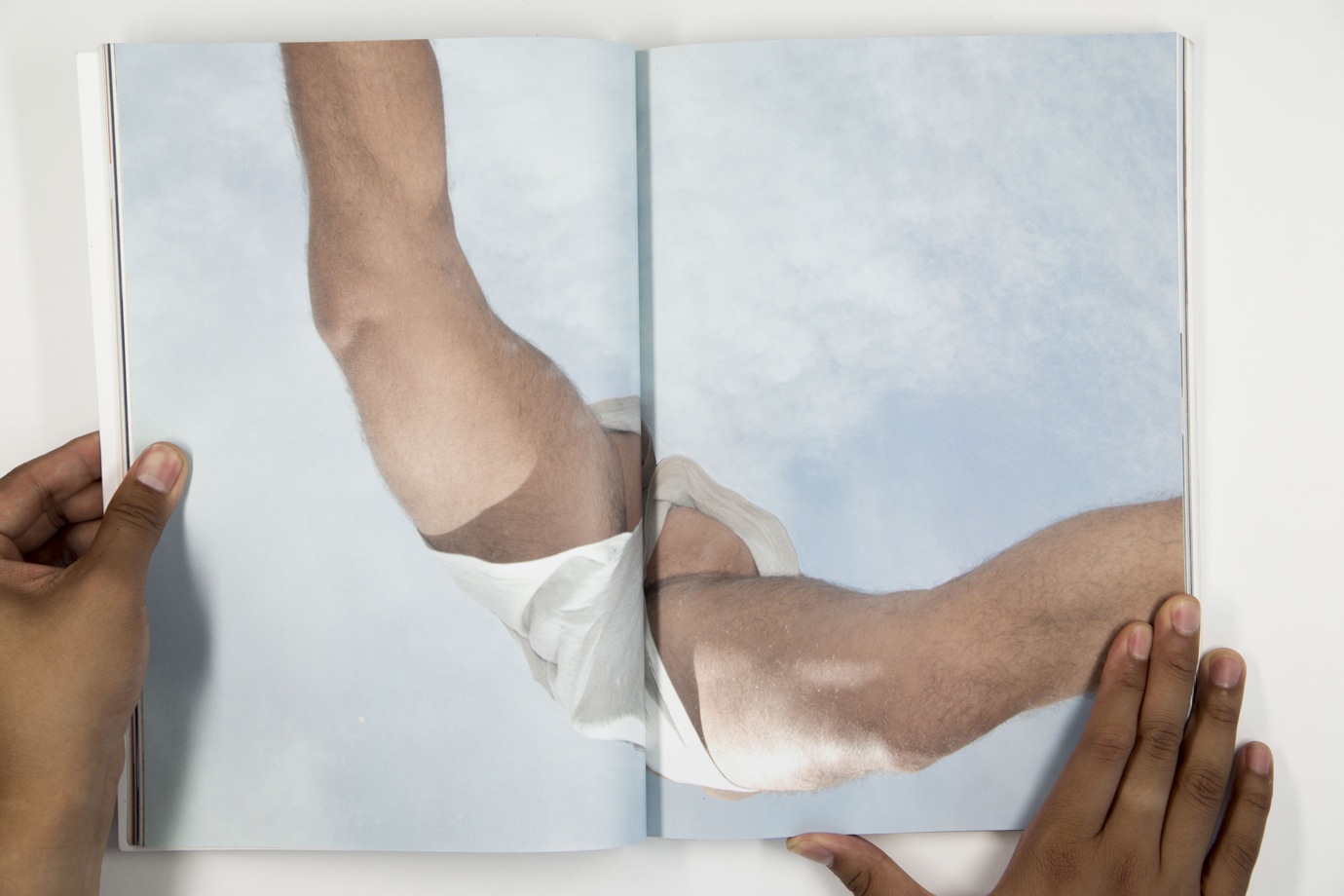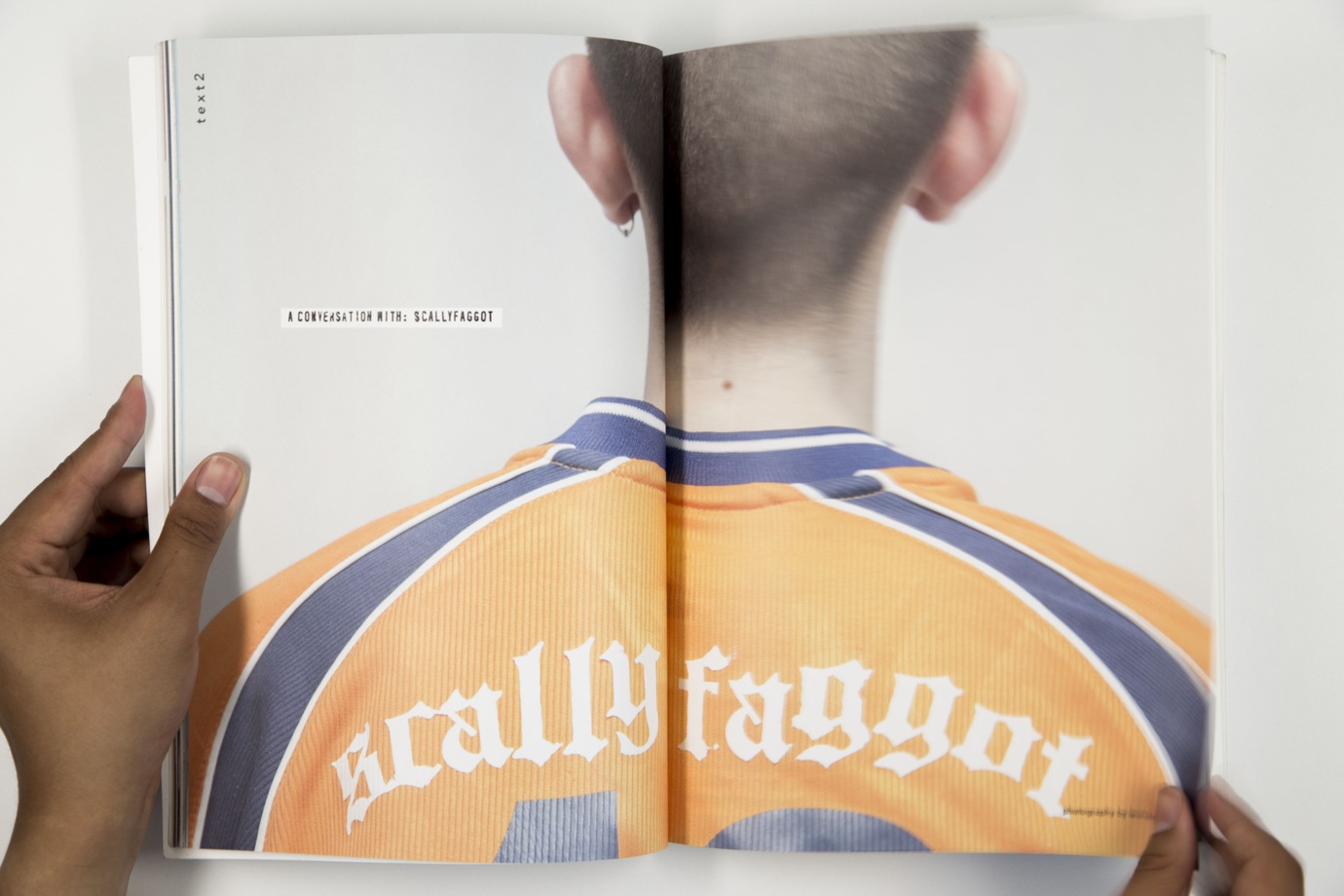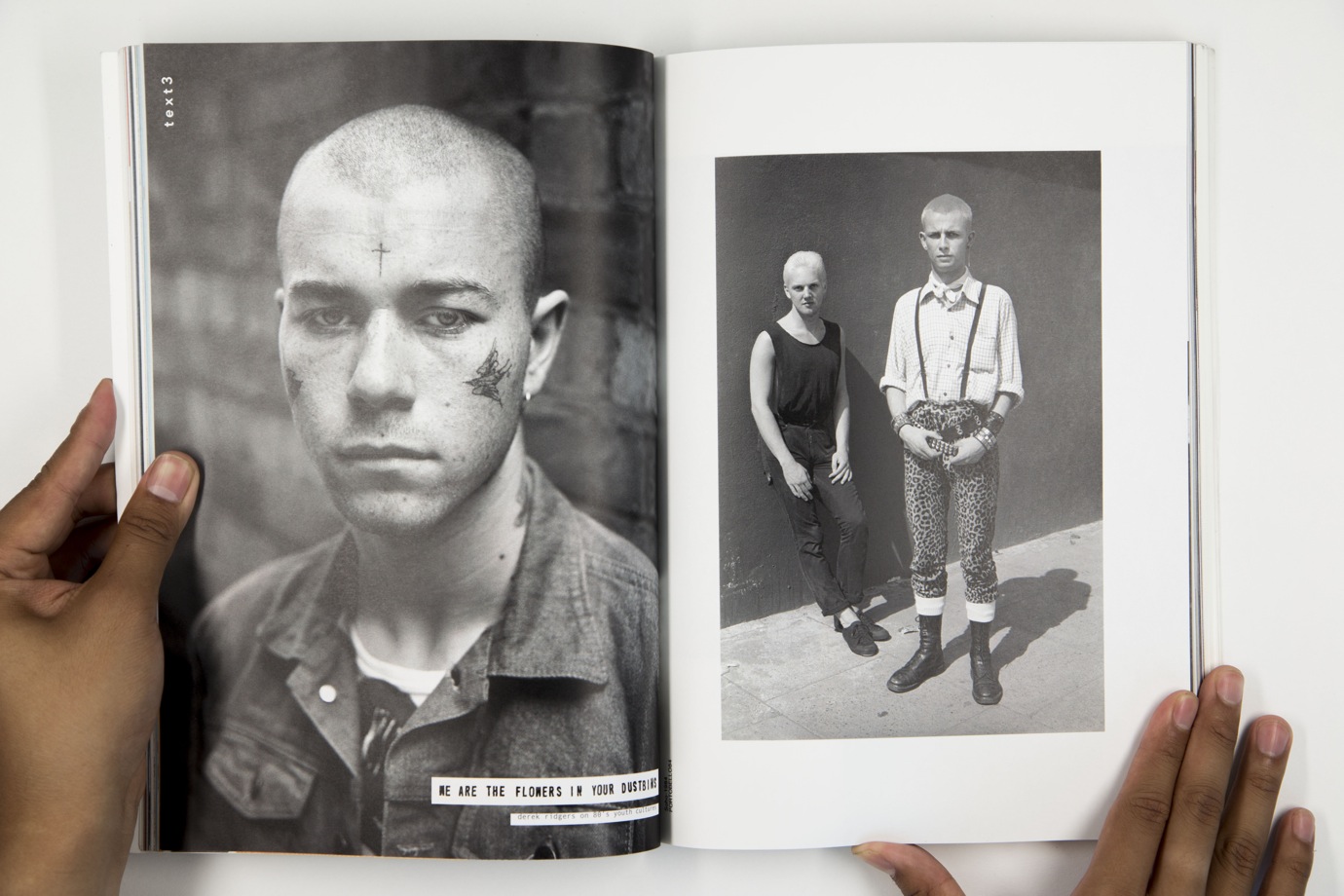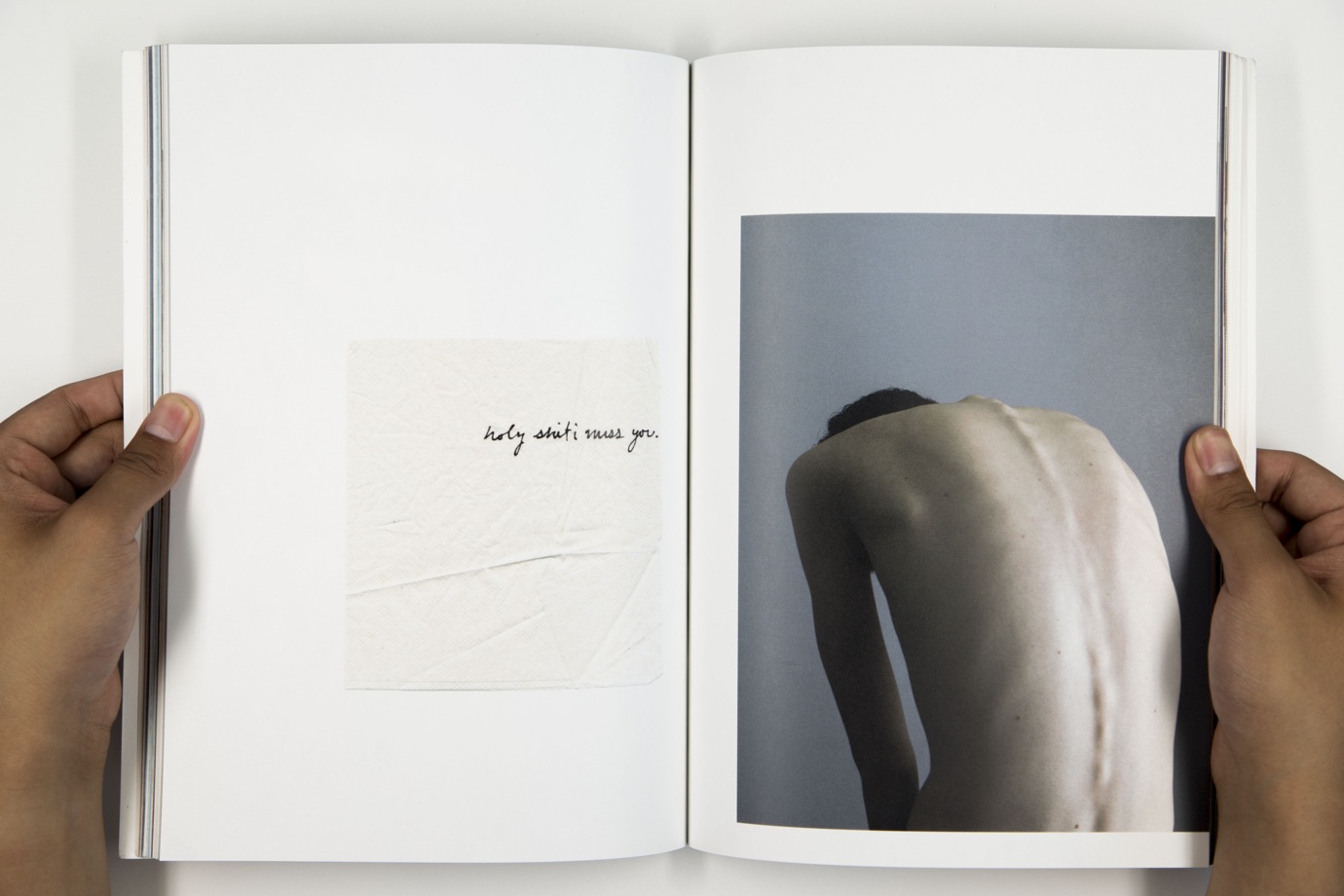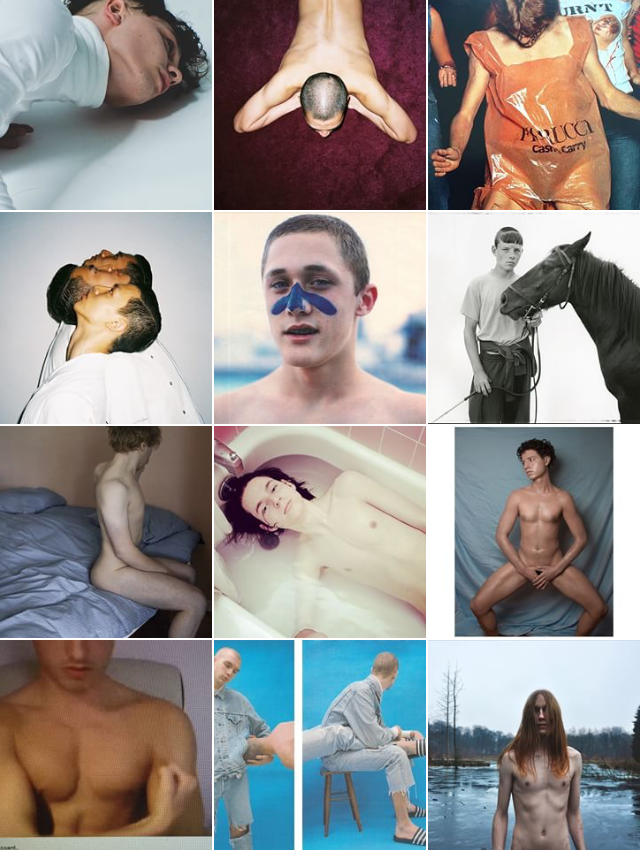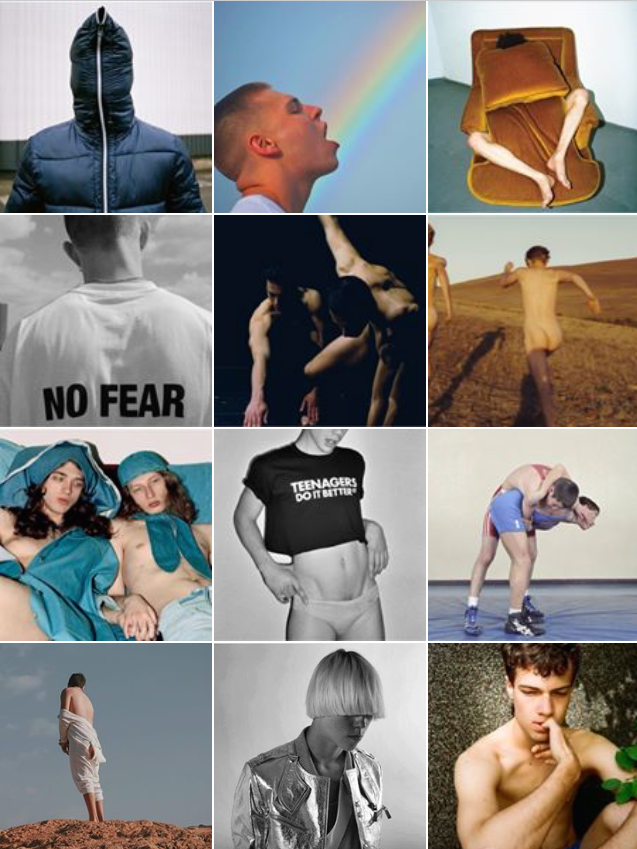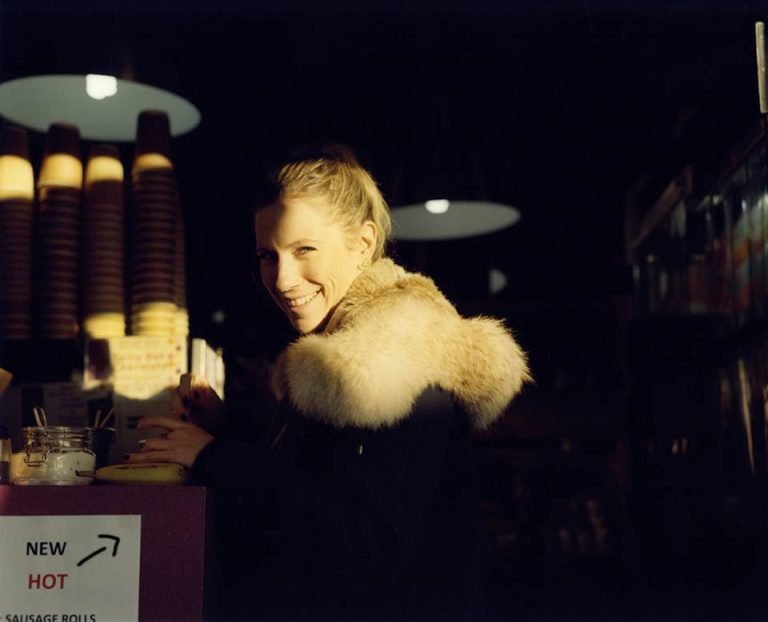After assisting Anna Hughes-Chamberlain, the Senior Fashion Editor of Hunger Magazine, for a year, Leonard felt an urge to shift away from styling womenswear, and to focus his final project on menswear and the photographic universe that surrounds it. “I’m a big fan of photographers like Corinne Day, Ryan McGinley, and Matt Lambert, who capture a sense of romanticism and honesty in their photographs,” Roman explains: “I wanted a magazine that represents the new type of youth.” He began researching a variety of interesting or ‘insta-famous’ boys via Instagram. Leonard was fascinated by the extreme following that these young, 16-17 year-olds have acquired simply by posting selfies. As most of these boys follow each other, he began visualising a whole network of young guys, all personifying the same ideal. They seemed to Roman to evoke the youthful, passionate, living-in-the-moment kind of attitude so perfectly embodied by Leonardo Di Caprio in the 1996 film adaptation of Romeo and Juliet – and thus, he had found a name for his publication. As the project grew, he began commissioning and collaborating exactly through Instagram, united as they were through their mutual aesthetic interest. “It’s not just a social media outlet anymore; it’s a platform full of creatives that are interested in the same.”
Despite his digital concept development, research and commissioning, the idea behind Romeo was always a physical magazine — “something people can touch and be connected with, not just through their phone,” he explains. ”There’s nothing better than a magazine printed well on nice paper.” Furthermore, it was important to assimilate the collaborative nature of most publishing work, as he began involving several people from around the world in the project. Sure, he was certain of his concept, but the project only benefitted from sharing it and making it grow: “You have to be open to other interpretation of your ideas. Sometimes I do find that quite hard, but the final product ends up becoming bigger and better.”
“ONE TIME OR THE OTHER, WE ALL WENT THROUGH THAT PHASE OF CARE-FREE, YOUNG, EXPERIMENTAL TEENAGE YEARS.”

